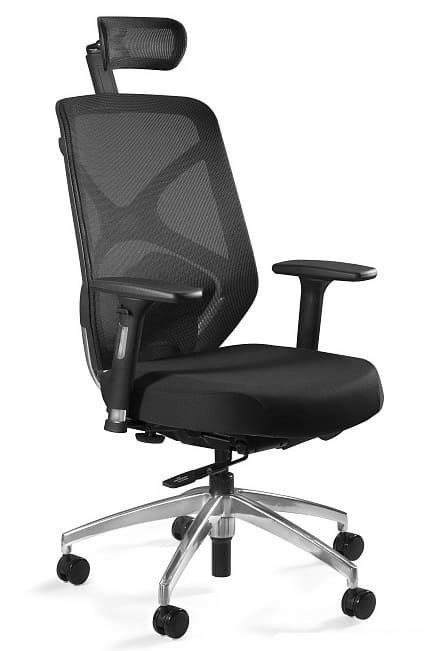Working in an office environment, whether it’s at home or in an actual office, can be strenuous to the entire body. After working for 8 hours a day at the desk, you will definitely feel it in your back, your spine, your neck and shoulders. Maintaining a proper posture is necessary if you want to feel good long-term and don’t feel the need to visit a chiropractor every couple of weeks. How to sit at the desk properly? Does an ergonomic office chair actually make a big difference and how can you choose the right one?
How to choose an ergonomic office chair?
There are different types of ergonomic office chairs to choose from and no one type is the best – it all depends on your individual preferences, the amount of work you do and what you feel comfortable with. There are, however, some things that you should focus on and keep in mind while choosing an ergonomic office chair for your workspace – whether it’s at home or at the office, it should be fit to your needs, compatible with your desk height and set properly to allow you to sit comfortably without slouching.
As far as the key features of ergonomic chairs go, you should be looking out for:
- the adjustable seat height,
- seat width and depth,
- lumbar support,
- the backrest as a whole,
- armrests and, optionally, neck support.
Generally, the more adjustments you can make the better – the chair should allow you to fit it to your body and posture and offer support without pushing you into a strange, uncomfortable position. However, if you’re not used to sitting straight and using ergonomic chairs, the first day or two of work can leave you feeling strange, like the chair isn’t actually comfortable. Once your body gets used to the new, proper posture, it should all be fine.

Setting the chair up properly is just as important
The way the chair is made and set up is one thing, but the key part of the whole ergonomic setup is the ability to adjust different parts of the chair to your body and needs. As far as adjustments go, with a good ergonomic office chair, you should be able to adjust the seat height so that your feet rest flat on the ground or, usually if the desk is too high, on a dedicated footrest. You should also be able to adjust the lumbar support, both in height and depth, so that it can fit properly into the natural curve of the spine. For some ergonomic chairs, the lumbar support is built into the backrest, which is also adjustable in height and angle – for many people this will be enough, although for some chairs you might need to equip it with an additional lumbar cushion.
Some finishing touches that play an important role in the overall ergonomic setup are the armrests. Working in the office, we tend to keep our hands resting on the keyboard and mouse and hanging loosely at the elbows, when in fact they should be completely supported by the armrests. They should be adjustable, especially with height, so that you can rest your elbows while typing – it’s not a good idea to rest your entire forearms on the armrests while typing.
How a good office chair affects your posture, comfort and health?
An ergonomic chair can not only prevent back and neck straining that causes back pains, but it can also reduce the amount of pain you feel if until now you’ve been sitting in a poorly chosen chair. This is why it’s never too late to change and adjust your working space – even the smallest of changes for the better can help you along the way. When choosing your next office chair (or having one bought by your boss for the office), try out different options and figure out which one is best for you. Comfort and health should always come first.
